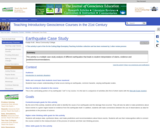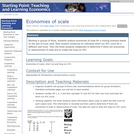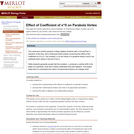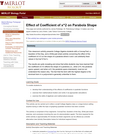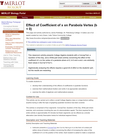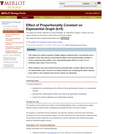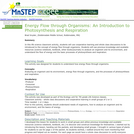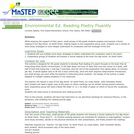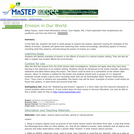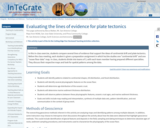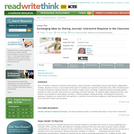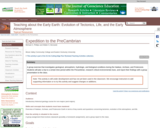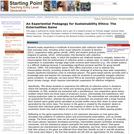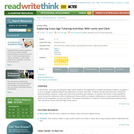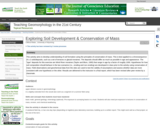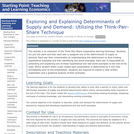How do soils develop over time? Perhaps the best place to learn is a across a chrosequence of deposits that span a wide range in age (and appearance). If we can identify parent material and measure its chemical composition, it can be used as a benchmark for comparison with the chemical composition of soils that were formed from it. This enables us to quantify the degree of chemical depletion. In general we expect older soils to be more depleted, all else equal. But older soils might also be subject to greater physical erosion, in addition to chemical weathering. This complicates the assessment of soil development because the eroded material is no longer present.
Students are presented with two alternate hypotheses about the soils/deposits they visit:
a) the material has been weathering w/ little physical erosion since it was deposited
b) the material has been weathering and eroding since it was deposited
These hypotheses are developed in lectures before the activity and are based on principles of conservation of mass.
During their site visit, students coarsely characterize topography (@2 -- 5 m scale) for several "representative" cross sections. If time is limited this step could be done remotely (e.g., with topo maps and Google earth).
Students assess and discuss evidence for erosional (and depositional) processes since the deposits were created. They look for broad topographic signatures and measure (for example) the spatial density and material volume of tree throw and animal burrowing mounds, if present.
Students also assess and discuss evidence for in-situ weathering (e.g., development of rinds, soil texture, and mineral alteration). The idea is to train their eyes to observe and key in on any site-to-site differences.
Students dig (and discover!) at select sites. They sample soils at regular intervals from pits (with discussion of merits of different sampling approaches e.g., random vs. stratified random). Students discuss relationships in excavated pits.
A jigsaw approach would be an effective way to tackle the large number of field tasks outlined here.
Back in the lab, using literature values, students estimate weathering rates for each deposit. They compare their estimates with back-of-the-envelop estimates for physical erosion rates (based on tree throw/animal burrowing density) and literature values of diffusivity (which can be coupled with curvature measurements).
The instructor promotes discussion of the implications of differences in residence time on weathering rate estimates.
Students analyze samples by XRF; depending on the course's time constraints students are provided with geochemical data from previous year's field effort or other existing data (in this case Taylor and Blum, 1995).
Students are asked to prepare a final report focusing on the following questions: Are soils products of erosion and weathering, or are they being formed in place by weathering alone? Under what circumstances can we expect erosion to dominate over weathering and visa versa? Students first prepare figures and then use them to develop an an outline (reviewed by the instructor) for their report. Students prepare a draft and engage in peer review (one review each). Students revise their reports, based on the peer review comments, and submit their final report.
Designed for a geomorphology course
(Note: this resource was added to OER Commons as part of a batch upload of over 2,200 records. If you notice an issue with the quality of the metadata, please let us know by using the 'report' button and we will flag it for consideration.)
